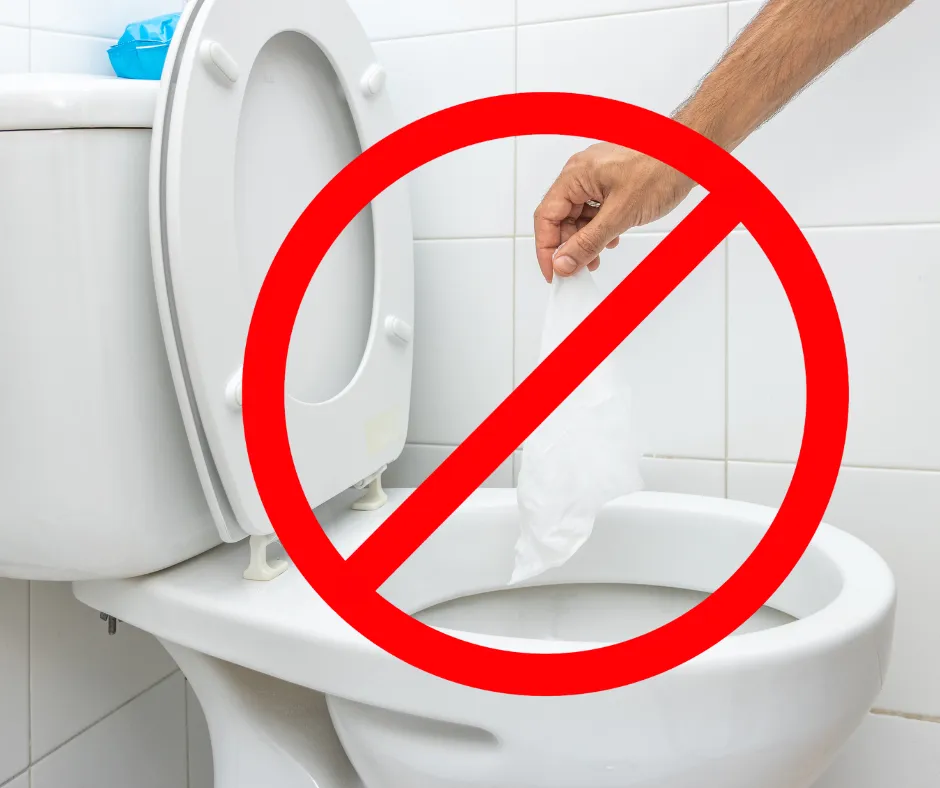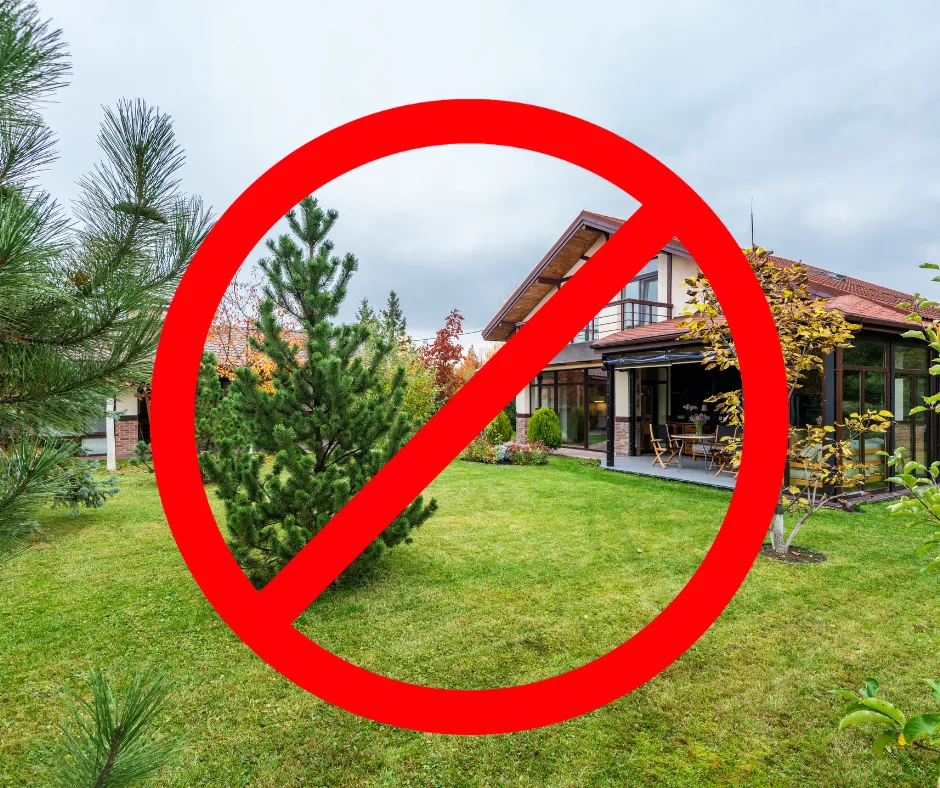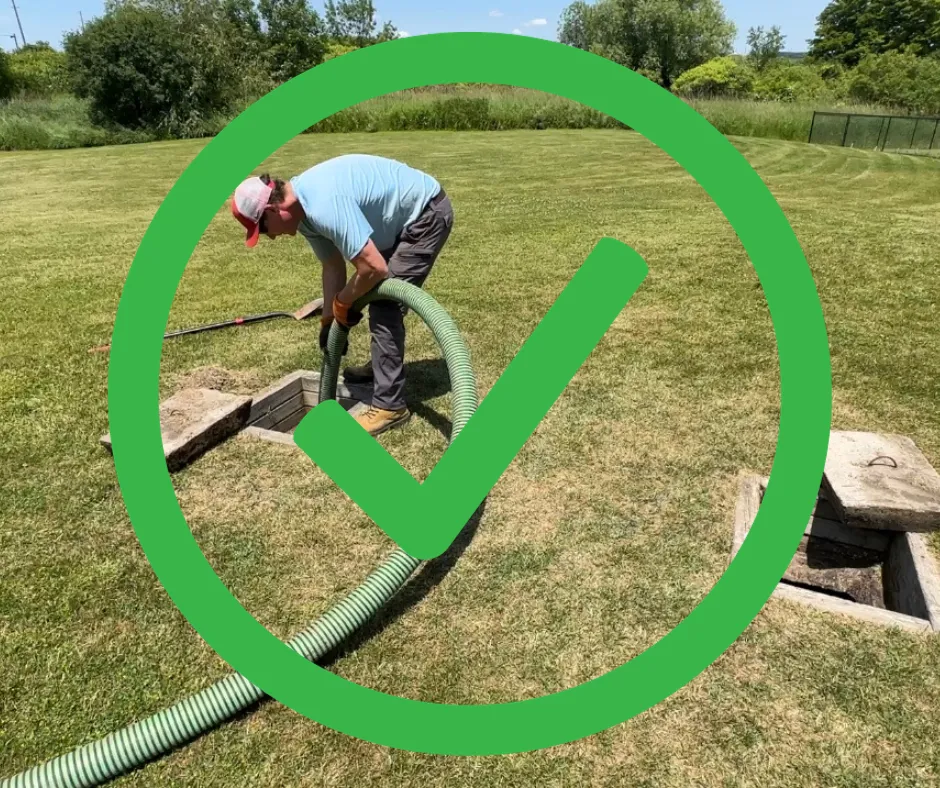How To Maintain Your Septic System
1. Get your septic tank pumped every 3-5 years (or as recommended by your local sewage hauler)
One of the most important things you can do for your septic system is get it pumped every 3–5 years. According to the Ontario Building Code, your tank should be pumped when the sludge reaches about one-third of the tank’s capacity—and that can happen faster than you think.
As a general rule, you should pump your tank every 3 years if you have 4 people living in the house, and every 5 years if it’s just 2 people. If you have a larger household or use more water, it should be done even more frequently.
If you don’t pump it regularly, that buildup can overflow into your septic bed, causing clogs and possibly leading to a full bed replacement—which is a major and expensive job. Regular pump outs are simple, cost-effective, and help keep your system running smoothly for years.
Staying on top of maintenance now saves you from big headaches (and big bills) later. If you’re not sure when your last pump out was, it might be time to book one!
2. Clean your effluent filter every 6-9 months.
If your septic system has an effluent filter—and most do now because of Ontario Building Code changes—it’s really important to keep it clean. The effluent filter is located on the outlet pipe of your septic tank, and its job is to catch solids before they make their way into the septic bed.
That filter needs to be cleaned every 6–9 months to keep your system working properly. If it gets clogged, it can slow down the flow or even cause backups into the house—something no one wants.
Taking a few minutes to clean the filter regularly is one of the best things you can do to protect your septic bed and avoid a backup into your home. If you’re not sure if your system has one or how to clean it, feel free to reach out—we’re always happy to help.
3. Fix any leaking water sources right away!
Even a small leak in your plumbing—like a dripping faucet or running toilet—can overwhelm your septic system over time. Septic beds are only designed to handle so much water each day. When that limit is constantly exceeded, it can lead to backups, slow drainage, or even full system failure.
A lot of people don’t realize how much water can be wasted by things like leaking toilets, malfunctioning water softeners, or humidifiers draining non-stop. It might not seem like a big deal, but it adds up fast.
That’s why it’s so important to check your fixtures regularly and fix any leaks right away. Catching these small issues early can save you from major septic problems—and big repair bills—down the road.

What you should NOT put into your sewage system
- Anti-bacterial soaps
- Automatic toilet bowl cleaners
- Flushable” wipes or other sanitary products
- Liquid fabric softener
- Harsh chemicals
- Food scraps and coffee grounds
- Oils/grease/fats
- Drain de-cloggers
- Pharmaceuticals


Septic System DON'TS
- Don't allowing toilets, faucets, or other fixtures to leak continuously, as this can overload the septic system, potentially flood the bed, and lead to system failure.
- Don’t allow vehicles to drive over or park on the leaching bed
- Don’t build skating rinks or above ground pools on it
- Don’t dig without knowing the location of your sewage system
- Don’t plant any trees or shrubs on or near the bed; their roots can clog the pipes
- Don’t drain downspouts, sump pumps, etc down or near the tanks or leaching bed
- Don’t build over the tank or leaching bed with a hard surface such as asphalt, brick or patio stones
- Don’t excessively water the lawn over the leaching bed
- Don’t use a garbage disposal/garburator

Septic System DO's
- Do keep an accurate record of maintenance, pump outs and service calls
- Do keep a system diagram for reference
- Do repair leaky plumbing fixtures right away (especially leaky toilets)
- Do keep the access lids easily accessible and securely fastened
- Do install an effluent filter in your septic tank to protect your leaching bed and to ensure compliance with the Ontario Building Code
- Do ensure that all contractors know the location of your leaching bed, get the required utility located done and ensure that any landscaping does not impact the bed.

